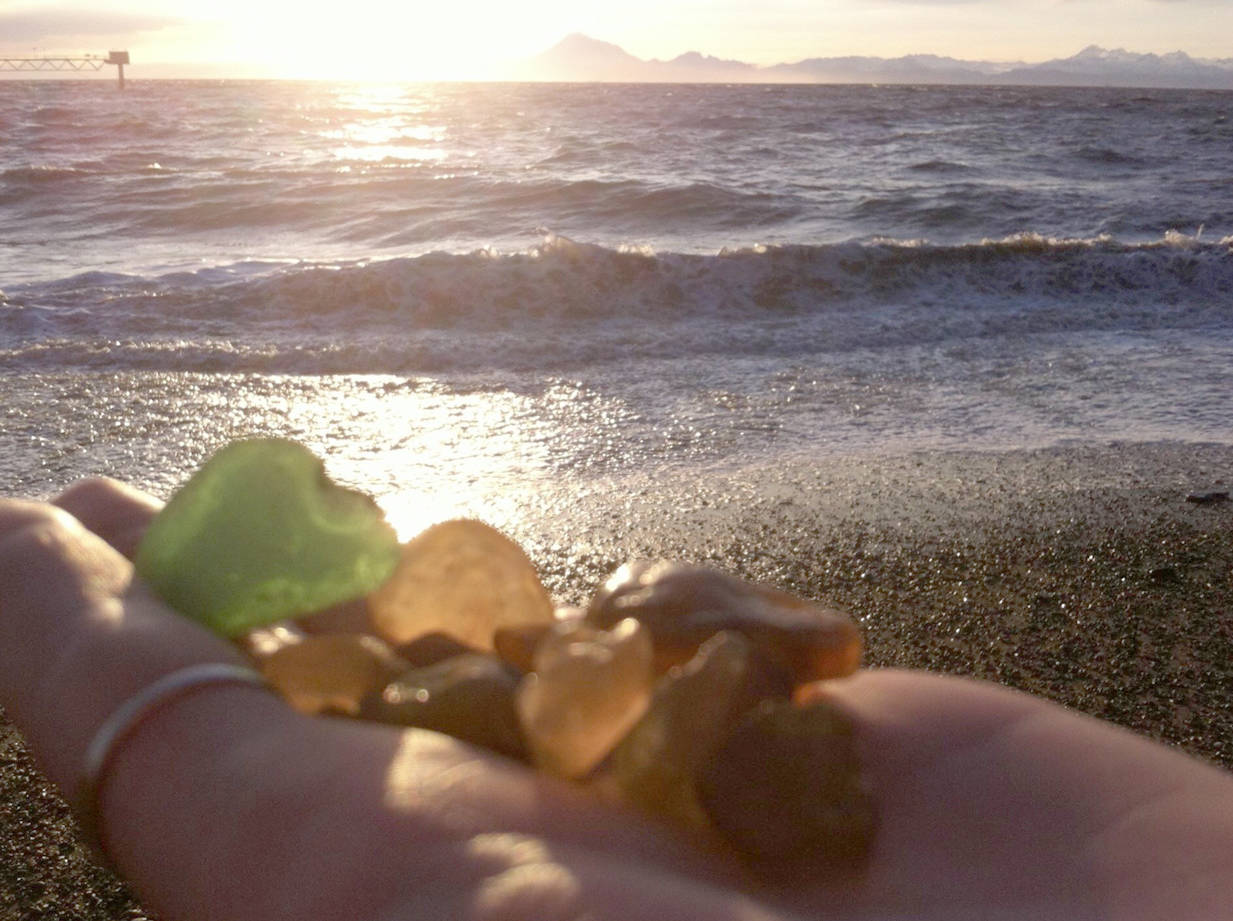Almost everyone I know likes to search for agates along our Cook Inlet beaches. Some folks have a better search image than others, keying in quickly on these translucent (sometimes opaque) stones that vary from blood-red to amber to almost clear in color. Most are small, less than a small pea, but I’ve occasionally found golf-ball sized agates on Salamatof Beach and along the beach north of Bishop Creek.
When I decided to write a story about agates, I thought it would be an easy Wikipedia search. But the more I probed, the more mysterious agates became.
Dr. Dick Reger, retired from the Alaska Division of Geological &Geophysical Surveys, tells me that agates found on our local beaches don’t originate from the Kenai Peninsula.
And Dr. Peter Heaney, a mineral sciences professor at Penn State University and an agate expert, wrote me that “agates are one of the few gem materials that have not been successfully synthesized, even today. So nobody knows exactly how agates formed. After many decades of studying crystal growth, I regard agates as the most complex example of hierarchical pattern formation in minerals, and most of the complex patterning is not even visible to the naked eye.”
Here’s what I found out from these two experts.
The secret to making agate is how silica (SiO2) dissolves in water. An agate starts with a cavity or void in rock, which could be sedimentary, metamorphic or igneous.
But the best rock, for agate formation, is young volcanic rock in which vesicles are formed by the expansion of a gas bubble trapped inside the lava. Like Swiss cheese, as water containing dissolved silica percolates through the rock, the minerals begin to crystallize out within these cavities.
Ninety percent of an agate is quartz, but Heaney found the other 10 percent is moganite, a transparent mineral with the same chemical composition as quartz but a different structure. The quartz is encapsulated by an outer layer of very fine-grained chalcedony, which is a mixture of quartz and moganite.
As the crystal grows under low pressure and temperatures, agate fibers twist in a helical fashion, even as the outer chalcedony fibers grow inward like spokes on a wheel. Further, Heaney believes the silicate has to be a little bit polymerized, with repeated units of five to 10 molecules that will give a banding pattern sometimes found in agates from our local area, the color of the bands coming from trace elements like iron or manganese.
Because of their microcrystalline structure, agates are extremely resistant to weathering. So eventually the matrix in which they are imbedded (whether rock or even dinosaur bone!) erodes away and they are set free.
The outer surface of an agate may be pitted and rough initially, a consequence of removing the original coating which formed the cavity. The agates then remain as nodules in the soil or are deposited as gravel in streams and along shorelines where they are polished over time.
Agate colors are generally the result of staining by the waters in which they are transported or by mineralized groundwater after they are buried.
Dick Reger believes agates were ferried to the northwestern Kenai Peninsula by glaciers during the last ice age from the west side of Cook Inlet. There, agates formed less than 2 million years ago in chalcedony-rich hydrothermal deposits associated with faults in volcanic rocks deep in the Mount Spurr complex west of Tyonek.
They were then scoured out by intensively eroding ice streams flowing down the nearby Chakachatna-McArthur River corridor, carried by glacier to the Salamatof-Nikiski area, and ultimately deposited in sub-estuarine fans that jut from our coastal bluffs on the northwestern peninsula. Not surprisingly, a good time to search for exposed agates is after a winter storm erodes those bluffs.
Here on the Kenai, Kenaitze called lucky agates nudech’ghela. Peter Kalifornsky wrote that “the lucky agate stone brings good luck to whoever finds it. Sometimes they would be walking on the beach and would find the marks left by the lucky agate when it fell from the sky. They followed the trail and found it. And it gave them luck.”
Dr. Alan Boraas, anthropologist at the Kenai Peninsula College, tells me that luck to Dena’ina was not a random event, but “an essence that was everywhere, soothing like gravity. To obtain luck of this type one had to have a ‘good heart,’ meaning a proper attitude toward nature and particularly toward hunted animals.”
Elsewhere in the world, agates ended up being carried to the shoreline of the River Achates (now called Dirillo) in present-day Sicily, where they were found and given their name 3,000 years ago by Theophrastus, a Greek philosopher and naturalist. Just as early Greeks and Alaskan Natives recognized the uniqueness of agates, we continue to appreciate their mystery when we find one during our beach walks.
Dr. John Morton is the supervisory biologist at Kenai National Wildlife Refuge. Find more Refuge Notebook articles (1999-present) at https://www.fws.gov/refuge/Kenai/community/refuge_notebook.html.

